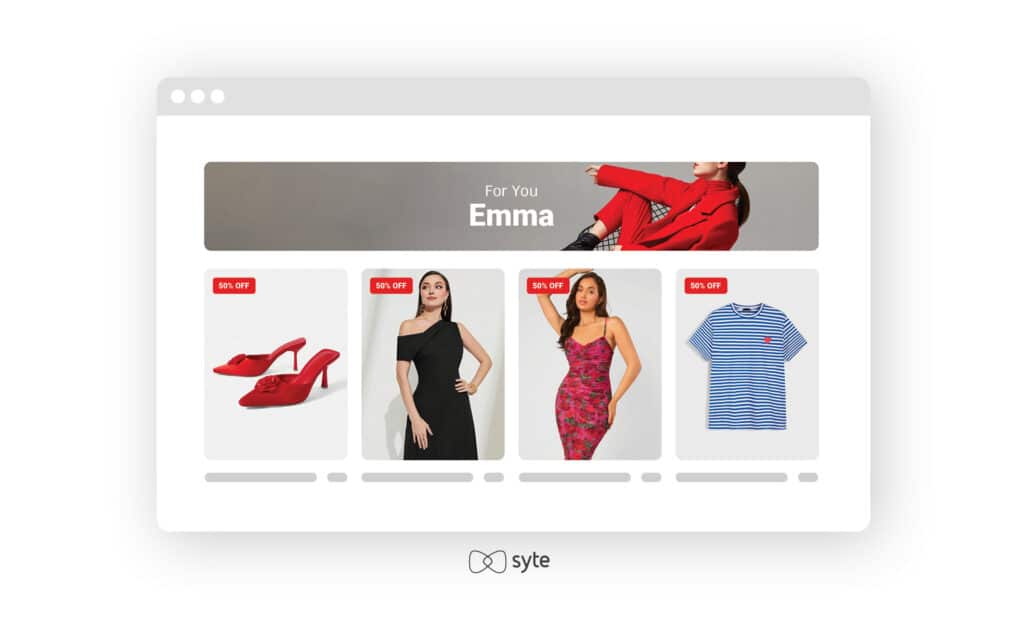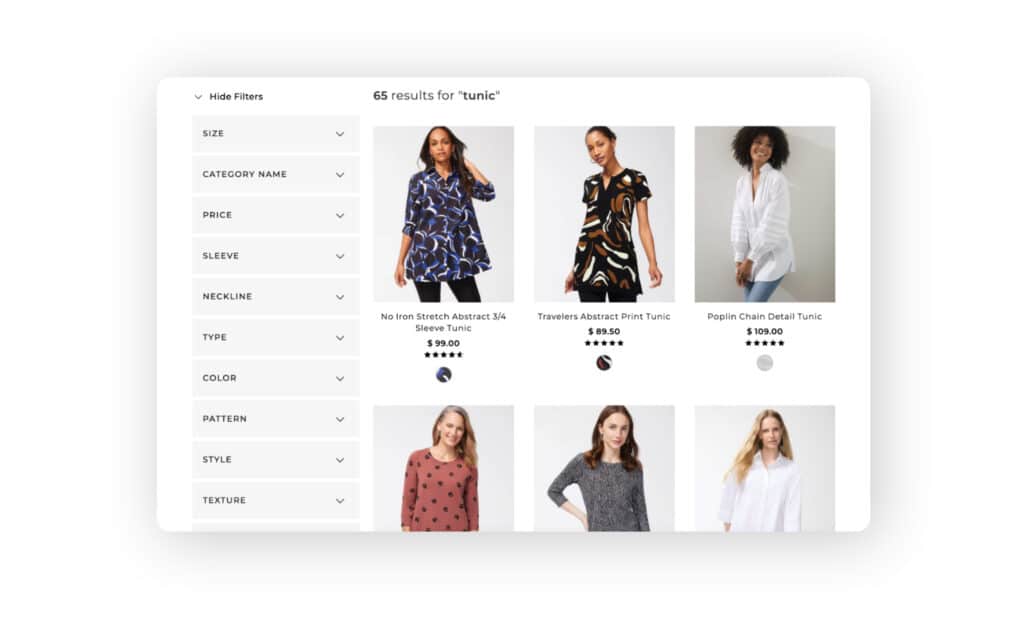It is that time of the year again, offering a golden opportunity to bolster sales, create new connections with shoppers, and fortify your position in your space. To thrive, you must leave a remarkable impact through exceptional shopping experiences, in which how you handle operations behind the scenes is critical.
In our last post, we covered all the ways in which you should improve your frontend eCommerce experience ahead of Black Friday and Cyber Monday. Today, we’ll explore the importance of backend processes and discuss the strategies that can lead to a successful and rewarding retail holiday for your brand and customers alike.
Unraveling Shopper Expectations for BFCM
BFCM continues to attract consumers even amid precarious market conditions, as evidenced by last year’s standout record of 196.7 million Americans participating in the shopping event. There has been a clear trend towards online shopping, with 42% of Thanksgiving weekend shoppers opting for the convenience of the digital experience. On Black Friday, mobile devices accounted for a staggering 79% of online traffic, reflecting an increase of over 5% compared to the previous year. The most popular product categories during BFCM 2022 comprised electronics, toys, exercise equipment, apparel, and accessories.
With such a high volume of shoppers online and on mobile specifically, brands and retailers have a lot of work to do behind the scenes to ensure everything runs smoothly.
Backend Strategies for a Stellar BFCM Season
From optimized inventory planning to performance monitoring, here are the key tactics to elevate your backend operations and set the stage for a successful and unforgettable BFCM:
1. Optimized Inventory Planning
Inventory planning doesn’t have to be tedious, nor does it have to feel like taking a shot in the dark. New AI-powered tools can now analyze historical data and real-time trends, so you can anticipate shopper preferences with accuracy. These AI-driven insights allow you to make decisions on which products to stock up on and which to limit, avoiding unnecessary and costly overstocking or shortages. This is especially important as 37% of brands say that stocking issues remain among their greatest inventory challenges.
Visual AI in particular also takes things a step further with the capability to identify trending product attributes. By analyzing the product images of items preferred by past and current shoppers, you can swiftly identify emerging demand for specific product features or characteristics. Armed with this knowledge, you can quickly adapt your product offerings to match consumer preferences, ensuring you stay ahead of the competition, increase customer satisfaction, and maximize revenue potential.

Use cases:
- Demand forecasting: Using AI, you can accurately forecast the demand for different products and product details. By stocking up on popular items and trending features, and allocating inventory more efficiently, retailers can reduce stockouts and meet customer demands without overstocking.
- Personalized product recommendations: AI-powered inventory planning can also empower you to offer tailored recommendations based on customers’ browsing and purchasing behavior. This also increases the likelihood of successful cross-selling and upselling opportunities across the customer journey.
- Flash sales: Having lightning deals is a common tactic during shopping events to create urgency and drive sales. You can strategically allocate inventory for these limited-time offers, ensuring you have enough stock to meet the surge in demand while not risking overstocking once the flash sale ends.
2. Real-time Inventory Management
Effective inventory management is integral during retail holidays like BFCM, where there is typically high demand for a limited time only. By implementing AI-powered automated product tagging, retailers can efficiently manage inventory, reduce the risk of tagging inaccuracies, and ensure that new items are promptly categorized and displayed. A robust system that seamlessly updates inventory levels in real-time also guarantees that both backend and frontend data remain synchronized, providing customers with accurate stock availability information and minimizing the risk of overselling or out-of-stock situations. Additionally, retailers should be sure to set up automated alerts for low stock levels as a proactive measure to prevent running out of popular products and ensure that businesses can fulfill customer orders without delays.

Use cases:
- Multi-channel inventory management: Real-time inventory management enables businesses to synchronize inventory across multiple sales channels, such as online stores, mobile apps, and physical retail locations. This integration ensures that customers see consistent product availability and pricing.
- Automated reordering: During BFCM, sales volumes can fluctuate rapidly. Real-time inventory management can trigger automated reordering processes when inventory levels reach a pre-defined threshold, ensuring that retailers can restock popular items in a timely manner to meet the heightened demand.
- Preventing overselling: Backend operations can also prevent overselling despite limited stock. Brands ensure this with an inventory that is accurately updated during the peak shopping period.
3. Improved Product Findability
The impact of optimized inventory management is negligible if customers can’t find the products they want. While most begin with search engines, at least 18% of shoppers begin their hunt with retailers. Your product discovery experience is only as good as your metadata: By carefully and efficiently tagging products with relevant and accurate keywords on the backend using an AI-powered solution, brands can boost visibility in search results, making it easier for customers to locate items they desire amidst a sea of deals.
When products are discoverable, shoppers are more likely to stay engaged with the website, find the perfect deals, and make purchases, ultimately contributing to higher conversion rates and increased revenue.

Use cases:
- Faceted navigation: With a greater number of well-organized product tags in the backend, brands and retailers can offer advanced filters that allow customers to narrow down their product search based on specific criteria like price range, brand, size, color, material, and more.
Setting the right price is crucial in encouraging customers to purchase. Thankfully, this can also be automated with dynamic pricing that adjusts in real-time based on factors like demand, competition, and inventory levels. Not everyone takes advantage of the technology – only 21% of retailers say they use it. Armed with historical purchase data, you can create personalized, limited-time promotions and discounts tailored to different shopper personas, enhancing engagement and loyalty. The implementation of exclusive offers during BFCM creates a sense of urgency, encouraging customers to take advantage of the discounts promptly.
Use cases:
- Real-time pricing adjustments: Dynamic pricing allows retailers to adjust product prices in real-time based on various factors such as demand, inventory levels, competitor prices, and customer behavior. This empowers brands to maximize sales while maintaining profitability.
- Personalized promotions: Dynamic promotions enable businesses to create personalized offers and discounts for individual customers based on their browsing and purchase history. These special offers foster customer engagement which, in turn, increases the chances of conversion.
- Bundles: Brands can create product bundles and offer special discounts when customers purchase multiple items together. Additionally, dynamic promotions can be used to upsell customers by offering discounts on higher-priced items when they purchase related or complementary products.
5. Auto-Curation of Thematic Collections
Having everything in one place saves customers time and directs them to items that align with their interests and intent. But the process of creating product collections can be tedious and time-consuming. By using merchandising automation software on the backend, you can quickly create collections based on thematic tags, for example, grouping fringe and crochet items as a “festival” collection. This allows you to efficiently categorize and display products that appeal to specific customer preferences. This automation also ensures a cohesive and enticing shopping experience for customers, encouraging them to explore a diverse range of products that align with their interests.

Use cases:
- Seasonal themes: Auto-curation of thematic collections can be used to create seasonal collections that align with the BFCM shopping event. For example, retailers can automatically group products with Christmas or New Year’s themes, making it easier for customers to find holiday-specific items.
- Trend-based collections: Brands and retailers can also identify trending products or attributes based on customer behavior and market trends. By automatically curating collections around these data points, brands can quickly adapt their offerings to align with the latest customer preferences.
6. Scalable Backend Infrastructure
Brands must be well-prepared to handle increased website traffic and peak loads during BFCM. By proactively preparing your backend infrastructure, you can ensure that your website and app can withstand the heavy influx of shoppers without experiencing performance issues or crashes. Implementing dynamic server capacity scaling is crucial, as it allows businesses to automatically adjust server resources in real-time based on the traffic volume.
To further optimize backend operations, employing caching mechanisms is key. Caching helps reduce server load by storing frequently requested data in temporary storage, allowing subsequent requests for the same data to be served faster without taxing the backend servers – resulting in improved response times and enhanced overall website performance.
Use cases:
- Handling high traffic: BFCM brings with it a massive influx of online shoppers. Scalable backend infrastructure allows retailers to handle the surge in website traffic without experiencing performance issues or crashes.
- Reducing load time: Scalable backend infrastructure with optimized caching and content delivery networks (CDNs) can help reduce load times, ensuring that pages load quickly and efficiently even with high traffic volumes.
- Ensuring security and fraud protection: With a large number of transactions taking place during BFCM, security and fraud protection are paramount. Scalable backend infrastructure with robust security measures and fraud detection systems can help safeguard customer data and prevent fraudulent activities during the sales event.
7. Efficient Order Processing and Fulfillment
Once all the shopping is done, shipping becomes the name of the game. An efficient order processing and fulfillment strategy can be a game-changer for brands. By automating the order processing workflow, you can significantly reduce the likelihood of manual errors and streamline the entire process, ensuring that orders are swiftly and accurately handled. This not only enhances customer satisfaction but also frees up valuable resources to focus on other critical aspects of the holiday sale. Additionally, integrating backend systems with shipping carriers enables real-time tracking and status updates for customers, keeping them informed about the whereabouts of their orders and improving transparency and trust.

Use cases:
- Real-time order processing: Efficient order processing in the backend allows retailers to handle a large volume of orders in real-time. Automation and streamlined workflows can help ensure that orders are processed swiftly and accurately, reducing the risk of delays and errors in fulfillment.
- Order tracking and status updates: Providing customers with real-time updates on their order status is crucial during BFCM. A backend system that efficiently tracks orders and updates customers about their order status, including shipping and delivery details, enhances transparency and customer satisfaction.
- Split order fulfillment: In cases where a customer’s order includes multiple items shipped from different locations, efficient order processing enables split order fulfillment. The backend system can optimize the fulfillment process by coordinating shipments from various warehouses, ensuring that customers receive their orders as quickly as possible.
A/B tests on the backend allow retailers to experiment with various merchandising strategies to determine which approach resonates most effectively with their target audience. These tests provide valuable insights into customer behavior, enabling data-backed decision-making that can boost conversion rates and ultimately drive revenue growth.
Meanwhile, continuous monitoring of backend performance metrics, including response times, server load, and error rates, is vital to ensure a seamless shopping experience for customers during the BFCM rush. By closely tracking these key indicators ahead of the holiday, you can quickly identify and resolve any issues that may arise, minimizing downtime and maintaining the site’s responsiveness even under high traffic loads.
Use cases:
- Product page optimization: A/B testing can be used in advance of BFCM to optimize product pages and find the most engaging layout, product images, and product descriptions. By testing different variations of product pages, retailers can identify which elements drive higher conversion rates and provide a more compelling shopping experience for customers during the shopping event.
- Checkout process refinement: Retailers can test different checkout flows, such as single-page versus multi-page checkouts or different payment methods, to identify the most user-friendly and efficient approach. You can then track the completion rates and identify any bottlenecks that need to be addressed before BFCM.
Nail Your BFCM Strategy for a Successful Season
A well-executed backend approach ensures smooth and efficient operations while also impacting the bottom line. It empowers you to meet the heightened demands of the BFCM shopping frenzy, maximize sales opportunities, and attract new customers. As retailers vie for consumer attention, those who prioritize and fine-tune the backend of their site and operations will undoubtedly stand out from the crowd and lay the foundation for long-term business growth and customer loyalty.